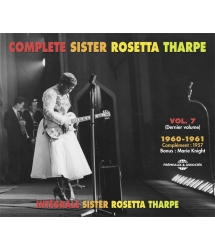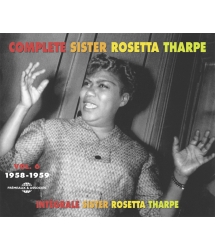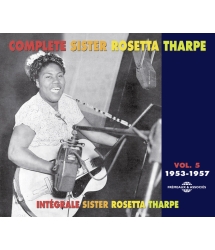- Our Catalog
- Philosophy
- Philosophers of the 20th century and today
- History of Philosophy (PUF)
- Counter-History and Brief Encyclopedia by Michel Onfray
- The philosophical work explained by Luc Ferry
- Ancient thought
- Thinkers of yesterday as seen by the philosophers of today
- Historical philosophical texts interpreted by great actors
- History
- Books (in French)
- Social science
- Historical words
- Audiobooks & Literature
- Our Catalog
- Jazz
- Blues
- Rock - Country - Cajun
- French song
- World music
- Africa
- France
- Québec / Canada
- Hawaï
- West Indies
- Caribbean
- Cuba & Afro-cubain
- Mexico
- South America
- Tango
- Brazil
- Tzigane / Gypsy
- Fado / Portugal
- Flamenco / Spain
- Yiddish / Israel
- China
- Tibet / Nepal
- Asia
- Indian Ocean / Madagascar
- Japan
- Indonesia
- Oceania
- India
- Bangladesh
- USSR / Communist songs
- World music / Miscellaneous
- Classical music
- Composers - Movie Soundtracks
- Sounds of nature
- Our Catalog
- Youth
- Philosophy
- News
- How to order ?
- Receive the catalog
- Manifesto
- Dictionnary











- Our Catalog
- Philosophy
- Philosophers of the 20th century and today
- History of Philosophy (PUF)
- Counter-History and Brief Encyclopedia by Michel Onfray
- The philosophical work explained by Luc Ferry
- Ancient thought
- Thinkers of yesterday as seen by the philosophers of today
- Historical philosophical texts interpreted by great actors
- History
- Books (in French)
- Social science
- Historical words
- Audiobooks & Literature
- Our Catalog
- Jazz
- Blues
- Rock - Country - Cajun
- French song
- World music
- Africa
- France
- Québec / Canada
- Hawaï
- West Indies
- Caribbean
- Cuba & Afro-cubain
- Mexico
- South America
- Tango
- Brazil
- Tzigane / Gypsy
- Fado / Portugal
- Flamenco / Spain
- Yiddish / Israel
- China
- Tibet / Nepal
- Asia
- Indian Ocean / Madagascar
- Japan
- Indonesia
- Oceania
- India
- Bangladesh
- USSR / Communist songs
- World music / Miscellaneous
- Classical music
- Composers - Movie Soundtracks
- Sounds of nature
- Our Catalog
- Youth
- Philosophy
- News
- How to order ?
- Receive the catalog
- Manifesto
- Dictionnary
1951-1953
ROSETTA THARPE
Ref.: FA1304
Artistic Direction : JEAN BUZELIN
Label : Frémeaux & Associés
Total duration of the pack : 1 hours 52 minutes
Nbre. CD : 2
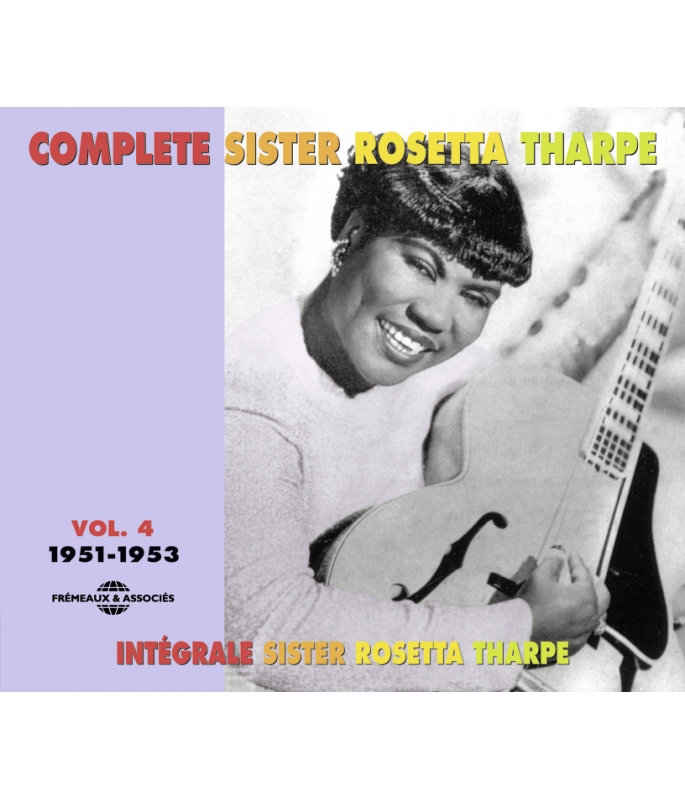
1951-1953
- - * * * * JAZZMAN
- -
1951-1953
The wedding of Sister Rosetta Tharpe, recorded live in front of more than 20,000 people, is one of the most extraordinary sound document in the history of Gospel.
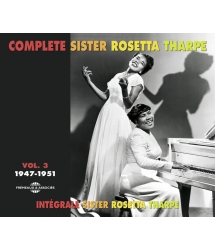
1947-1951
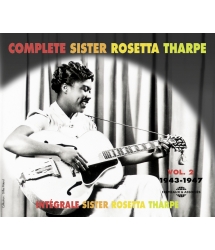
1943-1947
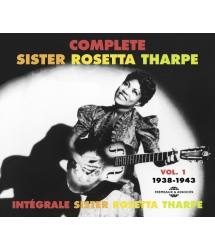
1938-1943
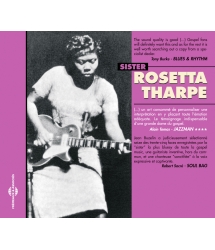
GOSPEL 1938-1943




-
PisteTitleMain artistAutorDurationRegistered in
-
1LET THE LOWER LIGHTS BE BURNINGROSETTA THARPETRADITIONNEL00:03:161951
-
2THERE S A FOUNTAIN FILLED WITH BLOODROSETTA THARPEW COWPER00:02:271951
-
3WHAT A FRIEND WE HAVEIN JESUSROSETTA THARPEC CONVERSE00:02:551951
-
4AMAZING GRACEROSETTA THARPEJOHN NEWTON00:03:261951
-
5I WANT JESUS TO WALK AROUND MY BEDSIDEROSETTA THARPER H HARRIS00:02:501951
-
6ROYAL TELEPHONEROSETTA THARPET RUTH00:02:391951
-
7MILKY WHITE WAYROSETTA THARPEL COLEMAN00:03:291951
-
8HIS EYE IS ON THE SPARROWROSETTA THARPEC H GABRIEL00:03:281951
-
9ANNOUNCEMENTS BECAUSEJOHN JOHNG D HARDELOT00:04:291951
-
10MARRIAGE PROLOGUE AND BENEDICTION PRAYERREV SAMUEL KELSEYREV SAMUEL KELSEY00:05:101951
-
11WEDDING CEREMONYREV SAMUEL KELSEYREV SAMUEL KELSEY00:07:141951
-
12GOSPELTRAINTHE SUNSET HARMONIZERS OF WASHINGTON DCTRADITIONNEL00:03:151951
-
13THANK YOU JESUSTHE HARMONIZING FOUR OF RICHMONDJ W ALEXANDER00:04:191951
-
14GOD DON T LIKE ITROSETTA THARPETRADITIONNEL00:03:581951
-
15SO HIGHROSETTA THARPETRADITIONNEL00:03:581951
-
PisteTitleMain artistAutorDurationRegistered in
-
1COME UNTO MEROSETTA THARPETRADITIONNEL00:02:341952
-
2HAVE A LITTLE TALK WITH JESUSROSETTA THARPETRADITIONNEL00:02:001952
-
3TELL HIM YOU SAW MEROSETTA THARPETRADITIONNEL00:02:461952
-
4WHEN I FIRST SOUGHT THE LORD CHANGESROSETTA THARPEROSETTA THARPE00:02:291952
-
5THE LAST MILE OF THE WAYROSETTA THARPEC A TINDLEY00:03:051952
-
6THERE LL BE PEACE IN THE VALLEY FOR MEROSETTA THARPETHOMAS A DORSEY00:03:061952
-
7NEAR THE CROSSROSETTA THARPEW H DOANE00:02:581952
-
8IN THE GARDENROSETTA THARPEMILES C AUSTIN00:02:411952
-
9LET S TALK ABOUT JESUSROSETTA THARPED ROBEY00:02:441952
-
10OLD LANDMARKROSETTA THARPEW H BREWSTER00:02:211952
-
11PRESSING ONROSETTA THARPETRADITIONNEL00:02:271952
-
12NEVER LET GO HIS HANDROSETTA THARPETRADITIONNEL00:02:311952
-
13ALL ALONE WITH CHRIST THE LORDROSETTA THARPEROSETTA THARPE00:02:531952
-
14LET S GO ONROSETTA THARPETRADITIONNEL00:02:251952
-
15I LL MEET YOU OVER YONDERROSETTA THARPETRADITIONNEL00:02:471952
-
16HOW WELL DO I REMEMBERROSETTA THARPETRADITIONNEL00:03:021952
-
17I JUST COULDN T BE CONTENTEDROSETTA THARPETRADITIONNEL00:02:071952
-
18CRYING IN THE CHAPELROSETTA THARPEARTIE GLENN00:02:281952
-
19THERE S PEACE IN KOREAROSETTA THARPETRADITIONNEL00:02:211952
-
20FEED ME JESUSROSETTA THARPEM ASHER00:03:051952
-
21SMILE IT THROUGHROSETTA THARPEROSETTA THARPE00:02:401952
COMPLETE SISTER ROSETTA THARPEVOL. 4 fa1304
COMPLETE SISTER ROSETTA THARPE1951-1953
INTÉGRALE SISTER ROSETTA THARPE
VOL. 4
Au tournant des années 50, la musique religieuse afro-américaine, et les gospel songs en particulier, vivent ce qu’on a appelé plus tard leur âge d’or. Non que cela signifie un renouveau de la ferveur spirituelle comme cela s’est traduit à plusieurs reprises tout au long de l’histoire du peuple noir américain depuis les débuts de l’esclavage, mais plutôt parce que les chants religieux participent des grands changements musicaux qu’a engendrée l’après-guerre. La population, qui s’est largement urbanisée, réclame des rythmes nouveaux tout en restant attachée à ses racines. Si le jazz, en pleine mutation, perd une partie de son public d’origine, celui-ci se retrouve dans l’une ou l’autre des formes qui constituent cet agglomérat hybride que le métier appelle rhythm and blues, et la musique sacrée doit s’adapter à ces formes nouvelles qu’elle a d’ailleurs souvent initiées.Ainsi, à la fin des années 40, quelques retentissants morceaux s’installent aux premières loges des hit-parades Rhythm & Blues (R&B). C’est la période des plus grands succès commerciaux de Sister Rosetta Tharpe dont l’art se trouve parfaitement en phase avec les tendances du jour. Mais, comme chacun sait, le marché des musiques populaires (pop, R&B, on dirait en France : variétés), tout en exploitant jusqu’à la corde ce qui se vend, réclame sans cesse du nouveau (nouveaux rythmes, nouvelles danses, nouveaux chanteurs, nouvelles sonorités…) pour assurer son succès et sa rentabilité. Au contraire des chants sacrés qui, comme le blues, évoluent peu car leur essence, immuable, solide et profonde, s’inscrit au cœur même de l’âme noire.Sister Rosetta Tharpe connaît donc ses plus grands succès entre 1945 et 1949(1). Mais pour durer, il lui faut maintenir sa popularité en élargissant ses cibles.
Comme elle l’avait fait le 20 février 1951(2), la chanteuse, sans sa guitare, retrouve les jours suivants en studio l’organiste Larry Johnson et les Rosette Gospel Singers(3) pour quatre nouveaux morceaux s’inscrivant dans une veine semblable : des hymnes anciens susceptibles de toucher à la fois un auditoire conservateur, la classe moyenne noire et un nouveau public blanc qui commence à écouter Mahalia Jackson mais n’est pas encore prêt à entendre des gospel songs authentiques plus agressifs et trop “nègres” à ses oreilles. Rosetta reprend d’ailleurs Amazing Grace qu’avait enregistré Mahalia trois ans auparavant. À noter que dans cette interprétation, la soliste des Rosettes, Lottie Henry, dialogue avec Rosetta. Ce travail (de commande ?) de qualité il faut le reconnaître, consciencieusement achevé, le trio de Sammy Price s’installe, la chanteuse branche sa guitare, et sa partenaire privilégiée, Marie Knight, la rejoint. La suite du programme consiste alors en des reprises de gospel songs qui sont encore sur toutes les lèvres : le puissant I Want Jesus To Walk Around My Bedside et le très enlevé Royal Telephone créés par les Selah Jubilee Singers en 1939, ainsi que Milky White Way, le morceau des Trumpeteers (N°8 dans les charts R&B en 1948), qui est resté l’un des grands succès de l’histoire du gospel enregistré, chacun s’empressant de l’ajouter à son répertoire. Le quatrième titre, le vieil His Eye Is On The Sparrow dont Marie et Rosetta avaient fait une version rythmée deux ans plus tôt sous le titre He Watches Me(2), est repris ici sur un tempo plus “classique”.
Quant à Sammy Price, qu’on n’avait pas entendu au piano avec Rosetta Tharpe depuis plus d’un an et demi — sans doute était-il en froid avec elle(4) —, il apparaît plus lointain que d’habitude.Mais le véritable événement, le coup médiatique comme on dirait aujourd’hui, celui qui est destiné à faire du bruit et à remettre Sister Rosetta Tharpe tout en haut du piédestal (et en même tant porter un coup à la concurrence), va être la cérémonie en grandes pompes de son mariage.Le remariage(5) de Sister Rosetta Tharpe avec Russell Morrison, son road manager, agent artistique chez Decca et ancien manager des Ink Spots entre autres, dépasse à la fois la cérémonie religieuse où sont conviés famille et amis et la fête bon enfant qui suit. Il faut saisir l’occasion pour organiser un véritable show, assez démesuré pour l’époque, qui aura lieu au Griffith Stadium de Washington, moyennant un prix d’entrée pour le public de 90 cents à 2,50 dollars. Affaire rentable puisque le 3 juillet de cette année 1951, environ vingt-deux mille personnes se pressent dans le stade, ainsi que le rapportent le grand magazine noir Ebony et le Pittsburgh Courrier qui relatent l’événement avec maints détails sur la robe nuptiale (blanc immaculé !) et sur le tapis, également blanc, large de 200 pieds. Après les présentations et une ouverture chantée par Vivian Cooper(6), le mariage est célébré par le révérend Kelsey, le fameux évangéliste “radio” de la Temple Church of God in Christ de Washington(7) tandis qu’un évêque appose sa bénédiction aux deux époux. Après la cérémonie proprement dite et sur une immense estrade, Sister Rosetta chante un duo avec Marie Knight, un autre avec sa mère, Katie Bell Nubin(8) et interprète plusieurs morceaux avec les Rosettes dont une reprise de God Don’t Like It. Elle présente également les Sunset Harmonizers, de réputation locale, et les Harmonizing Four, encore à l’aube d’une belle carrière.
Le tout se terminant sous un gigantesque feu d’artifice. Dire que les principales rivales de Rosetta Tharpe, Mahalia Jackson en tête, furent ravies de l’événement, relève de l’euphémisme.La cérémonie du mariage ainsi que des extraits musicaux de cette mémorable journée furent rapidement exploités sur quatre 78 tours avant d’être réunis sur un 33 tours 25 cm. Nous avons tenu à rééditer, pour la première fois depuis sa publication, l’intégrale de ce disque rare en son entier, un document exceptionnel.Voilà donc la carrière de la chanteuse-guitariste relancée. Elle tourne abondamment avec ses Rosettes et son pianiste James (ou Jimmy) Roots, qui est devenu son accompagnateur régulier depuis 1949 suite à des problèmes d’argent avec Sammy Price. Problèmes qui entraînèrent une sérieuse brouille au moment où ce dernier apprit que Rosetta présentait au public le pâle, dans tous les sens du terme, Jimmy Roots comme étant Sammy Price lui-même !(4) Clyde Wright, alors membre de Selah Singers, se souvient d’une grande tournée nationale avec Rosetta Tharpe dans les années 49/50, ce qu’atteste l’affiche reproduite dans ce livret (où l’on ne s’embarrasse pas avec l’orthographe des noms propres !). D’autres quartettes vocaux masculins l’accompagnent également dans ces tournées, notamment les Sensational Nightingales et, surtout, les Dixie Hummingbirds, son chœur préféré dont elle adore le soliste, le jeune Ira Tucker sur lequel elle fait forte impression. « Vous ne pouvez vous imaginer comme je les aime. Je les connais très bien car j’ai beaucoup travaillé avec eux (…) Écoutez bien le soliste, c’est Ira Tucker, leur chef. C’est le meilleur chanteur masculin religieux que je connaisse », disait-elle à Jacques Demêtre dans la revue Jazz Hot en 1957.Les 10 et 11 janvier 1952, la chanteuse est de retour en studio accompagnée par un ensemble instrumental comprenant le guitariste Grady Martin qui, durant plusieurs séances, va souvent se substituer à Rosetta.
La juge-t-on trop digne, trop distinguée à présent, pour la laisser s’accompagner elle-même comme une “vulgaire” holy roller singer des grands chemins ? Au demeurant très bon instrumentiste, Grady Martin, avec un phrasé plus coulé et plus jazzy, imite si parfaitement Rosetta qu’il est parfois difficile de distinguer l’un de l’autre. Durant cette session, Rosetta Tharpe dialogue avec elle-même dans Come Unto Me et interprète un duo avec Red Foley, célèbre chanteur de country pop et de country gospel — il a eu du succès avec Peace In The Valley, avec Just A Clother Walk With Me… — connu également comme animateur de télévision. Il est sous contrat depuis 1946 avec Decca pour qui il a réalisé une série de country boogies. Ce duo sympathique, qui relève d’une stratégie commerciale, va ouvrir à la chanteuse les portes du « Grand Ole Opry », le show radio country de Nashville diffusé dans tout le pays et où les apparitions de chanteurs et musiciens noirs ne sont pas fréquentes.Elle enregistre également quatre titres avec le concours des Anita Kerr Singers, une chorale mixte, peut-être blanche, dans une veine nettement tournée vers le marché pop: deux negro spirituals composés au XIXe siècle, un gospel hymn bien connu de Charles Tindley (The Last Mile Of The Way) et une adaptation du Peace In The Valley de Thomas Dorsey. Pouvons-nous avoir l’audace d’écrire que la pétulante Sister n’apparaît pas tout à fait dans son élément au milieu de cette atmosphère un peu guindée ? Mais elle chante toujours aussi merveilleusement et le résultat ne manque pas de grandeur.Moins de deux mois plus tard, Sister Rosetta Tharpe met en boîte avec les Southwinds(9) une reprise du gospel Let’s Talk About Jesus, morceau créé un an auparavant avec succès par les Bells of Joy. À Jacques Demêtre, qui lui faisait écouter un autre titre de ce quartette masculin alors célèbre, la chanteuse répondait : « Je préfère de loin le disque qui les a lancé : Talk About Jesus où on entend une merveilleuse voix de basse (…). L’un d’eux s’appelle Littlefield, je me souviens maintenant. »(10)
À la fin de l’année, toujours avec la même équipe instrumentale, Rosetta Tharpe enregistre à nouveau huit titres dont quatre avec Marie Knight qu’elle n’avait pas retrouvé sur disque depuis près de deux ans. Instantanément le duo fait merveille. «Nous avons travaillé ensemble pendant des années, disait-elle encore à Demêtre, et nous avons parcouru tellement de chemin ensemble à travers tous les Etats-Unis, au Mexique et au Canada. C’est une très bonne chanteuse et nous nous complétions fort bien.» Nul n’en disconviendra à l’écoute de ces superbes pièces pleines de dynamisme que sont Old Landmark, de W. Herbert Brewster, ou Let’s Go On. Rosetta chante deux morceaux “seule avec le Christ” (All Alone With Christ The Lord) et deux autres avec les Southwinds.Notre quatrième volume s’achève avec quatre faces tournées en juillet 1953 avec des accompagnateurs différents. Rosetta interprète des gospel songs originaux, dont un There’s Peace In Korea d’actualité, et Feed Me Jesus dont elle chante à nouveau les deux voix. Elle reprend également Crying In The Chapel, création du chanteur de country & western Darrell Glenn, chantée par June Valli pour le marché pop et par Sonny Til & The Orioles, lesquels en font une sorte de negro spiritual doo wop qui entre dans les charts R&B le 25 juillet (deux jours avant l’enregistrement de Rosetta) pour y rester la bagatelle de quinze semaines dont quatre à la première place. Le disque grimpe également à la 11e place des meilleures ventes pop, fait encore rare à l’époque pour des artistes de couleur. C’est cette version qui, dans l’histoire, va rester comme l’un des grands tubes des fifties, reprise, après Rosetta, par une multitude de chanteurs, Elvis Presley et Little Richard en tête. Les quelques interventions de guitare qui ponctuent deux de ces quatre morceaux laissent augurer encore de magnifiques moments dans un avenir proche où notre Sister retrouvera Marie Knight, Sammy Price et les Harmonizing Four avant de s’embarquer bientôt pour le Vieux Continent…
Jean Buzelin
Auteur de Negro Spirituals & Gospel Songs, Chants d’espoir et de liberté (Éd. du Layeur/Notre Histoire, Paris 1998)
© 2006 Groupe Frémeaux Colombini SAS
(1) Si l’on considère ses disques classés dans les meilleures ventes R&B, Sister Rosetta Tharpe est à cette époque l’artiste de gospel la plus populaire du pays devant Marie Knight, Mahalia Jackson, Roberta Martin et Clara Ward, pour ne citer que des chanteuses.
(2) In Complete Sister Rosetta Tharpe Vol. 3 (FA 1303).
(3) Les Rosette Gospel Singers ont enregistré plusieurs disques sans Rosetta de 1949 à 1952 pour Decca et Atlantic.
(4) Si l’on en croit les propos rapportés par le pianiste à Dan Kochakian in Sam Price/Do You Dig My Jive (Whiskey, Women, and… KM-704).
(5) Russell Morrison est le troisième et dernier mari de Rosetta Tharpe qui avait épousé très jeune le pasteur Thorp(e), d’où son nom de scène, puis brièvement en 1945 Forrest Allen, un agent artistique de son milieu.
(6) La chanteuse Vivian Cooper, malgré d’indéniables qualités, n’a pas effectué de réelle carrière phonographique. Elle apparaît plusieurs fois en duo avec Marie Knight et a enregistré quelques faces sous son nom pour Decca en 1949/50 (In Gospel, Sisters & Divas, FA 5053).
(7) Le Rev. Kelsey, extraordinaire preacher, a fait sensation en 1948 avec sa renversante interprétation de Little Boy. Devenu évêque, il a effectué une tournée en Europe en 1965.
(8) Il est curieux de constater que ni Marie Knight, ni à un degré moindre, Katie Bell, ne figurent sur le disque souvenir de la cérémonie. S’il ne peut s’agir d’un problème de droits puisqu’elles enregistrent chez Decca, est-ce une volonté délibérée des producteurs ou bien l’enregistrement live n’était-il pas techniquement exploitable ?
(9) Quartette de modeste réputation, les Southwinds n’ont enregistré que deux faces pour Fury.
(10) Il s’agit du ténor A.C Littlefield, l’auteur du morceau, qui chante le lead vocal.
P.S. Personne ne semble d’accord pour reconnaître en Albert Ammons le pianiste qui accompagne Rosetta Tharpe au Carnegie Hall en 1938 (cf. Vol. 3). Tout avis perspicace sera le bienvenu quant à l’identité de ce mystérieux pianiste; Count Basie qui est photographié avec Rosetta ? Peu probable…
Nous remercions chaleureusement Daniel Gugolz (avec l’aide de Hans Maitner et Fritz Mülhöcker), Jacques Morgantini, Per Notini et Michel Pfau qui nous ont prêté l’essentiel des disques originaux réédités dans ce volume et dont plus des 2/3 n’avaient jamais été réédités depuis leur première parution.
Photos et collections : Jacques Morgantini/Pierre Allard, Michel Pfau, X (D.R.).
Photo de couverture : collection Jacques Morgantini.
english notes
In the late 50s Afro-American music, especially Gospel, enjoyed what would later become known as their golden age. This was not due to a sudden resurgence of the religious fervour that had played such an important role in American Negro history since the early days of slavery, but rather as a result of the huge changes that took place in musical taste in the post-war years. While much of the rural population had become urbanised and clamoured for a new type of music they still remained closely attached to their roots. While jazz, that was rapidly changing and developing, had lost some of its original audience, it was still present in one or other of the styles that contributed to the new rhythm and blues offshoot. Religious music now had to adapt itself to some of these musical forms that, moreover, it had often initiated.Thus, in the late 40s some outstanding titles reached the top of the R & B hit parades. This was when Sister Rosetta Tharpe had some of her biggest commercial hits for her style was completely in line with what people wanted to hear. However, it is widely recognised that pop music, while exploiting to the hilt anything that sold well, was always on the look out for something new (new rhythms, new dances, new singers, new sounds…) to ensure success and profitability. Unlike religious songs that, in the same way as the blues, evolved very little for their essence was solid and unchanging, rooted as it was in the heart and soul of black Americans.So Sister Rosetta Tharpe had already enjoyed her biggest hits between 1945 and 1949(1). But, to make sure her popularity lasted she had to widen her scope. A few days after 20 February 1951(2), the singer returned to the studios, without her guitar but with organist Larry Johnson and the Rosette Gospel Singers(3) for four new titles in a similar vein: old hymns that appealed to both the conservative black middle class and a new white audience that was beginning to listen to Mahalia Jackson but was still not ready for authentic Gospel songs that they found too aggressive and too “black”. Rosetta reprised Amazing Grace that Mahalia had recorded three years earlier.
On this version the Rosette’s soloist, Lottie Henry, enjoys vocal exchanges with Rosetta on an excellent track. Then Rosetta plugs in her guitar and is joined by the Sammy Price trio and her favourite partner, Marie Knight. The remainder of the programme is made up of well-known Gospel songs: the powerful I Want Jesus To Walk Around My Bedside and the spirited Royal Telephone created by the Selah Jubilee Singers in 1939. Then the Trumpeteers’ Milky White Way (N° 8 in the R & B charts in 1948), one of the hugest hits in the history of recorded Gospel that sold like hot cakes. Marie and Rosetta had made a rhythmic version of the fourth title, the old His Eye Is On The Sparrow two years previously under the title He Watches Me(2) but the tempo here is more classic. Sammy Price, who hadn’t played piano with Rosetta for over eighteen months—he had probably fallen out with her(4)—seems to stay more in the background than usual.But the event that was destined to take everyone by storm and put Sister Rosetta Tharpe back on top (and strike a blow at the competition at the same time) would be the huge show she made of her wedding. Sister Rosetta Tharpe’s third marriage was to Russell Morrison(5), her road manager, artistic agent for Decca and ex-manager of the Ink Spots among others. This became something more than just the religious ceremony, to which family and friends were invited, and the party that followed. This was the opportunity to organise a real show, something over the top for the times, at the Griffith Stadium in Washington where the public paid from 90 cents to 2 dollars 50 entrance. A profitable venture for, on 3 July 1951, twenty-two thousand people crowded into the stadium as was reported in the popular black magazine Ebony and the Pittsburgh Courrier which described the ceremony, including a detailed description of the wedding gown (immaculate white!) and the equally white, 200 foot wide carpet.
After the introductions and an opening vocal from Vivian Cooper(6), the wedding was conducted by the Reverend Kelsey, famous Evangelical “radio voice” of the Temple Church of God in Christ in Washington(7), while a bishop blessed the happy couple. Following the ceremony itself, on an enormous stage, Sister Rosetta sang a duo with Marie Knight, another with her mother Katie Bell Nubin(8) and interpreted several pieces with the Rosettes, among them a reprise of God Don’t Like It. She also introduced the Sunset Harmonizers, well known locally, and the Harmonizing Four, still starting out on their successful career. The show ended with a gigantic firework display. It could hardly be said that Rosetta’s principal rivals, led by Mahalia Jackson, were delighted by this event.The wedding ceremony and musical extracts from this memorable day were quickly produced on four 78s before being assembled on a 33r.p.m. You will find the whole of this rare disc reproduced here in its entirety, for the first time since it was issued — an exceptional document. Now Rosetta’s career was well and truly relaunched. She toured frequently with the Rosettes and her pianist James (or Jimmy) Roots, who had become her regular accompanist since 1949 following money problems she had with Sammy Price. These caused a serious row when the latter learnt that Rosetta had been introducing the pale (in all senses of the term) Jimmy Roots to the audience as Sammy Price himself!(4) Clyde Wright, then a member of the Selah Singers, recalls a big national tour with Rosetta in 1949/50, featured on the poster reproduced in this booklet (obviously correct spelling of the performers’ names was not a priority!). Other male voice quartets also accompanied her on these tours, notably the Sensational Nightingales and, above all, the Dixie Hummingbirds, her favourite choir. She adored their soloist, the young Ira Tucker, on whom she made a strong impression. In the Jazz Hot magazine in 1957 she told Jacques Demêtre: “I can’t tell you how much I like them. I know them very well because I’ve worked with them a lot (…) Just listen to the soloist, that’s Ira Tucker, their leader. He’s the best male religious vocalist I know”.
On 10 and 11 January 1952, the singer was back in the studios accompanied by an instrumental ensemble that included guitarist Grady Martin who, on several sessions, replaced Rosetta. Was she now considered too dignified, too distinguished to accompany herself like any common holy roller singer? For all that, Grady Martin, an excellent musician with a more jazzy approach, imitated Rosetta so well that it is sometimes difficult to tell one from the other. During this session Rosetta sings both voices on Come Unto Me and interprets a duo with Red Foley, famous Country pop and Country Gospel singer—his Peace In The Valley and Just A Closer Walk With Thee had both been hits—and TV presenter. Under contract to Decca since 1946, he had cut a series of Country boogies. This easy-listening duo, made for commercial reasons, opened the doors for Rosetta to the “Grand Ole Oprey”, the Nashville Country music radio show, broadcast throughout the States, and which did not often feature black musicians or singers.She also recorded four titles with the Anita Kerr Singers, a mixed choir, maybe white, in a style clearly aimed at the pop market: two Negro spirituals composed in the 19th century, a well known Gospel hymn by Charles Tindley (The Last Mile Of The Way) and an adaptation of Thomas Dorsey’s Peace In The Valley. Dare we suggest that the exuberant Sister does not appear totally at ease in this somewhat stilted atmosphere? However, she sings as marvellously as ever and the end result is not lacking in splendour. Less than two months later, with the Southwinds(9), Sister Rosetta Tharpe recorded a reprise of Let’s Talk About Jesus, with which the Bells of Joy had had a hit the previous year. The singer told Jacques Demêtre, who played her another track by this now famous male quartet: “I prefer the record that started them out, Talk About Jesus, on which you can hear a wonderful bass voice (…).
One of them was called Littlefield. I remember now”.(10)At the end of the year, still with the same instrumental backing, Rosetta Tharpe recorded a further eight titles, four with Marie Knight with whom she had not recorded for nearly two years. The duo was an instant success. “We worked together for many years (again talking to Demêtre) and we covered a lot of road together throughout the States, Mexico and Canada. She’s a very good singer and we complement each other very well”. Nobody can deny this after listening to such superb pieces as Old Landmark by W. Herbert Brewster or Let’s Go On. Rosetta sings two titles alone (All Alone With Christ The Lord) and two others with the Southwinds. This Fourth Volume closes with four sides cut in July 1953 with various backings. Rosetta sings original Gospel songs, including the topical There’s Peace In Korea and Feed Me Jesus on which she again sings both voices. She also reprises Crying In The Chapel, written by Country and Western singer Darrell Glenn, sung by June Valli for the pop market and by Sonny Til & The Orioles who transformed it into a sort of doo wop Negro spiritual which made the charts on the 25 July (two days before Rosetta’s recording) and remained there a total of fifteen weeks, four of them at the top. The record also climbed to 11th place in best pop sales, a rare event at the time for coloured performers. This version would remain one of the outstanding hits of the 50s, taken up after Rosetta, by numerous singers, not least Elvis Presley and Little Richard. The brief guitar interludes on these four titles augur well for a brilliant future when Rosetta would meet up again with Marie Knight, Sammy Price and the Harmonizing Four before taking off for Europe…
Adapted from the French text of Jean Buzelin by Joyce Waterhouse
Notes:
(1) Considering the number of her records listed among the best R&B sales, Sister Rosetta Tharpe was at the time the most popular Gospel performer in the country, ahead of Marie Knight, Mahalia Jackson, Roberta Martin and Clara Ward, to quote just the vocalists.
(2) In Complete Sister Rosetta Tharpe Vol. 3 (FA 1303).
(3) The Rosette Gospel Singers made several records without Rosetta between 1949 and 1952 for Decca and Atlantic.
(4) If we are to believe the words of pianist Dan Kochakian in Sam Price/Do You Dig My Jive (Whiskey, Women and … KM-704).
(5) Russell Morrison was the third and last husband of Rosetta Tharpe who had married Preacher Tharp(e) when she was very young (hence her stage name), then briefly in 1945 Forrest Allen, an artistic agent.
(6) Singer Viviane Cooper, in spite of her undeniable gifts, never had a real recording career. She appeared several times in duo with Marie Knight and recorded a few sides under her own name for Decca in 1949/50 (On Gospel, Sisters & Divas, FA 5053).
(7) The outstanding preacher, Reverend Kelsey, created a sensation in 1948 with his stunning interpretation of Little Boy. After becoming a bishop, he toured Europe in 1965.
(8) It seems curious that neither Marie Knight, nor to a lesser extent, Katie Bell, appear on the souvenir record of the wedding. This may have had something to do with recording rights as both of them were under contract to Decca, but might it have been deliberate on the part of the producers or was the live recording not technically good enough ?
(9) The little known Southwinds only recorded two sides for Fury.
(10)The tenor A.C. Littlefield, composer of the piece, who sings the vocal lead.
P.S. No-one seems to agree that Albert Ammons is the pianist accompanying Rosetta Tharpe at the Carnegie Hall in 1938 (cf. Vol. 3). Can anyone enlighten us as to the identity of this mysterious pinaist? Count Basie who is photographed alongside Rosetta ? Not very likely…
Our grateful thanks to Daniel Gugolz (with the help of Hans Maitner and Fritz Mülhöcker), Jacques Morgantini, Per Notini and Michel Pfau who lent us most of the original records reissued in this volume. Over two thirds of them have never been reissued since they first appeared.
Cover photograph : collection Jacques Morgantini.
CD1
1. LET THE LOWER LIGHTS BE BURNING (Trad.) 80593
2. THERE’S A FOUNTAIN FILLED WITH BLOOD (W. Cowper) 80594
3. WHAT A FRIEND WE HAVE IN JESUS (J. Scriven - C. Converse) 80595
4. AMAZING GRACE (J. Newton) 80596
5. I WANT JESUS TO WALK AROUND MY BEDSIDE (BEFORE I DIE) (R.H. Harris) 80597-A0
6. ROYAL TELEPHONE (T. Ruth) 80598-A0
7. MILKY WHITE WAY (L. Coleman) 80599-A0
8. HIS EYE IS ON THE SPARROW (C.D. Martin - C.H. Gabriel) 80600-A0
9. ANNOUNCEMENTS/BECAUSE (E. Teschemacher - G. d’Hardelot) 81626-A
10. MARRIAGE PROLOGUE & BENEDICTION/PRAYER (S. Kelsey/Wells) 81627-A
11. WEDDING CEREMONY Pt. 1 & 2 (S. Kelsey) 81628-A/81629-A
12. GOSPEL TRAIN (Trad.) 81568-A
13. THANK YOU JESUS (J.W. Alexander.) 81631-A
14. GOD DON’T LIKE IT (Trad. - arr. R. Tharpe) 81632-A
15. SO HIGH ! (Trad. - arr. R. Tharpe) 81633-A
(1-4) Sister Rosetta Tharpe (vo), acc. Larry Johnson (org), The Rosette Gospel Singers (on 1, 2, 3) : poss. Sarah Brooks (soprano vo), Lottie Henry (soprano, vo duet on 4), poss. Barbara Johnson, poss. Erma Wallace (contralto vo). New York City, February 21, 1951.
(5-8) Sister Rosetta Tharpe (g, vo) & Marie Knight (vo), acc. Sam Price Trio : Sammy Price (p), Abie Baker (b), Herbert Cowans (dm). NYC, same date.
Wedding Ceremony of Sister Rosetta Tharpe and Russell Morrison :
(9) John Massey, Frances May White (announcements), Vivian Cooper (vo), unknown (org).
(10) Rev. Samuel Kelsey (speech), Bishop Wells (benediction, prayer), unknown (p)(org).
(11) Rev. Samuel Kelsey (speech), Sister Rosetta Tharpe, Russell Morrison (comments), unknown (org).
(12) The Sunset Harmonizers of Washington, DC : poss. Carl Coates and unknown (male vo quartet), unknown (g)(dm).
(13) The Harmonizing Four of Richmond : Thomas Johnson, Lonnie Smith (tenor vo), Joseph Williams (baritone vo), Levi Hansley (bass vo), unknown (g)(dm).
(14-15) Sister Rosetta Tharpe (g, vo), The Rosette Gospel Singers (vo), unknown (p)(org)(dm). Griffith Stadium, Washington, DC, July 3, 1951.
CD2
1. COME UNTO ME (Trad.) 82119
2. HAVE A LITTLE TALK WITH JESUS (DR) 82120
3. TELL HIM YOU SAW ME (DR) 82136
4. WHEN I FIRST SOUGHT THE LORD CHANGES (R. Tharpe) 82137
5. THE LAST MILE OF THE WAY (C.A. Tindley) 82121
6. THERE’LL BE PEACE IN THE VALLEY FOR ME (T.A. Dorsey) 82122-A0
7. NEAR THE CROSS (F.J. Crosby - W.H. Doane) 82123-A0
8. IN THE GARDEN (C. Austin Miles) 821240
9. LET’S TALK ABOUT JESUS (A.C. Littlefield - D. Robey) 82348
10. OLD LANDMARK (W.H. Brewster) 83690-A
11. PRESSING ON (Trad.) 83691-A
12. NEVER LET GO HIS HAND (DR) 83695-A
13. ALL ALONE WITH CHRIST THE LORD (R. Tharpe) 83696-A
14. LET’S GO ON (Trad.) 83697-A
15. I’LL MEET YOU OVER YONDER (DR) 83699-A
16. HOW WELL DO I REMEMBER (DR) 83700
17. I JUST COULDN’T BE CONTENTED (DR) 83701
18. CRYING IN THE CHAPEL (A. Glenn) 84911
19. THERE’S PEACE IN KOREA (DR) 84912
20. FEED ME JESUS (R. Tharpe - M. Asher) 84913
21. SMILE IT THROUGH (R. Tharpe) 84914
(1-4) Sister Rosetta Tharpe (g on 1, 4, vo, re-recording on 1), acc. James “Red“ Roots (p), Grady Martin (elg), Jack Shook (g on 3, 4), Bobby Moore (b), Farris Coursey (dm), Red Foley (vo duet on 2). NYC, January 10, 1952.
(5-8) Sister Rosetta Tharpe (vo), acc. James Roots (p), Alfred Miller (org), Grady Martin (elg), Jack Shook (g), Ernie Newton (b), The Anita Kerr Singers (mixed vo group). NYC, January 11, 1952.
(9) Sister Rosetta Tharpe (vo), acc. James Roots (p), Grady Martin (elg), Ernie Newton (b), Farris Coursey (dm), The Southwinds (male vo quartet). NYC, March 5, 1952.
(10-13) Sister Rosetta Tharpe (vo, poss. g on 10) & Marie Knight (vo on 10, 11, 12), acc. James Roots (p), Grady Martin (elg), Jack Shook (g), Ernie Newton (b), Farris Coursey (dm). NYC, December 6, 1952.
(14-17) Sister Rosetta Tharpe (vo, poss. g on 15, 16, 17) & Marie Knight (vo on 14), acc. same, The Southwinds (vo on 16, 17). NYC, December 7, 1952.
(18-21) Sister Rosetta Tharpe (g on 19, 21, vo, re-recording on 20), acc. Fletcher Smith (p), Kelly Owens (org), Johnny Williams (b), Gene Brooks (dm). NYC, July 27, 1953.
CD Complete Sister Rosetta Tharpe Vol 4 © Frémeaux & Associés (frémeaux, frémaux, frémau, frémaud, frémault, frémo, frémont, fermeaux, fremeaux, fremaux, fremau, fremaud, fremault, fremo, fremont, CD audio, 78 tours, disques anciens, CD à acheter, écouter des vieux enregistrements, albums, rééditions, anthologies ou intégrales sont disponibles sous forme de CD et par téléchargement.)
